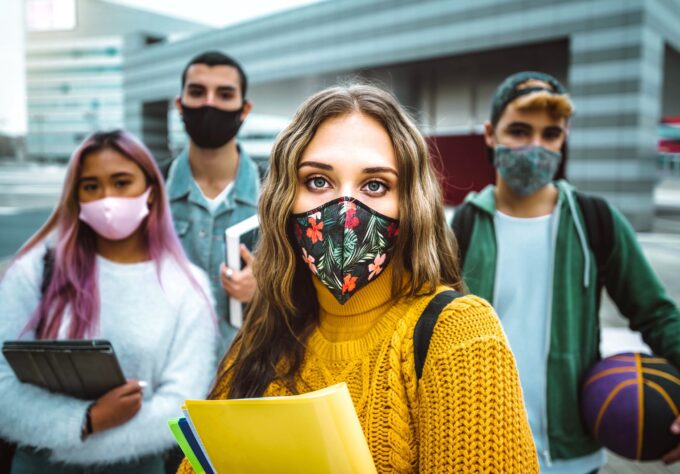Recent studies show an alarming increase in the number of teens vaping marijuana (“dabbing”). About a third of high school seniors and half of college students report using marijuana in the past year. And the vast majority are vaping it. This is not the marijuana of the past. It is much stronger and can cause serious emotional and physical problems.
If you are a parent of a teen, you don’t need the studies to tell you that vaping is on the rise. You are hearing about it in the media, have probably heard your kids talk about it, and may even be dealing with your own child vaping. It’s a whole new world for parents to learn about, but by learning the facts you can start a conversation with your child or teen and keep it going as they grow.
Here is some information about the marijuana of today. Use it to talk to your kids about the risks of vaping marijuana.
- How do kids vape marijuana? They can use a regular e-cigarette (“vape pen”) to smoke cartridges that contain liquid with marijuana in it. A special “wax pen” or “dab pen” is used to smoke thicker (and often more potent) marijuana products like wax. Kids are also using edibles (food or drink that contains marijuana).
- Where are teens getting marijuana for vaping? As in the past there are always dealers willing to sell to underage kids. For people over 21 living in states where it is legal, it is not difficult to get a medical marijuana card. Some teens use fake I.D.’s to get them. With a medical marijuana card, you can legally buy marijuana products at a dispensary.
- What is different about marijuana now compared to 25 years ago? The level of THC in marijuana is much higher than in the past.THC is the ingredient in marijuana that makes someone feel “high”. Of the states where marijuana is legal, most do not regulate how much THC can be in products. Studies have shown that over the last 25 years, the THC average concentration in marijuana has more than tripled from 4% to 17%. And new, processed vaping products (such as waxes and oils) can contain almost 100% THC.
- Is higher THC a problem? All THC has negative effects on the brain, especially the developing brain of teens. THC has been shown to changes teens’ brain anatomy and connectivity and impair memory. It lowers dopamine release in the brain. This can cause someone to show less expression or emotion (called a flat affect), avoid interaction with others, and have memory problems. It raises the risk of depression, anxiety, and even suicidal thoughts. High potency marijuana causes the same problems and also increases the risk of getting addicted. Teens who use high potency marijuana also may experience psychosis that could lead to a lifelong psychiatric disorder. It can cause medical problems such as uncontrollable vomiting.
- What is synthetic marijuana? Synthetic marijuana (“fake weed”) is made in a lab. It does not contain any THC from a marijuana plant but it is marketed as having the same effects. The makers often spray the synthetic marijuana onto herbs to give the impression that it is natural, but it is not. Some are available at gas stations. Examples include delta-8 THC, K2, and Spice. These synthetic products are largely unregulated. There is little information about whether these products are safe but it looks like the effects can be unpredictable and dangerous. And withdrawal from synthetic marijuana is more serious and lasts longer than withdrawal from THC products. Since synthetic marijuana does not show up on drug tests, some people use it as a way to get high but still have a negative drug test.
- Is marijuana addictive? While marijuana is not addictive in the way nicotine or opiates are, people can become dependent on it and experience changes in behavior, motivation and memory. Cannabis Use Disorder (CUD) is a medical condition that can:
- impair social functioning
- worsen memory
- cause school/work performance to go down
- Do people who stop marijuana go through withdrawal? Someone who is using marijuana regularly can have withdrawal symptoms such as:
- feelings of anger, crankiness, nervousness, and anxiety
- trouble sleeping and nightmares
- loss of appetite
- tiredness
- sadness
- belly pain, fever, chills, sweating, headache, and shakiness
- How do I know if my child is using marijuana? Start by asking your child in a nonjudgmental, concerned way if they have tried marijuana. You want to encourage conversation, not shut it down. Signs your child may be using marijuana include:
- bloodshot eyes and increased thirst and hunger
- new health issues such as coughing or wheezing
- e-cigarette supplies, like cartridges or other suspicious looking items
- new smells (sometimes there is no smell, but parents might notice fruity or sweet scents)
- How can I help my teen who vapes marijuana? Try to stay calm. Remember that you want to encourage conversation and work together. Start by talking to your child about why they use. Is it to feel more relaxed? Is it part of their social scene? Brainstorm with them how they can get the same result without marijuana. Maybe exercising more would help with stress. They could try getting involved with social activities where marijuana isn’t involved. Trying to help someone to stop using marijuana can be tough. But you don’t have to do it alone. Talk to your health care provider. They can talk to your child and also recommend programs (texting, online, and in person) that may help.



